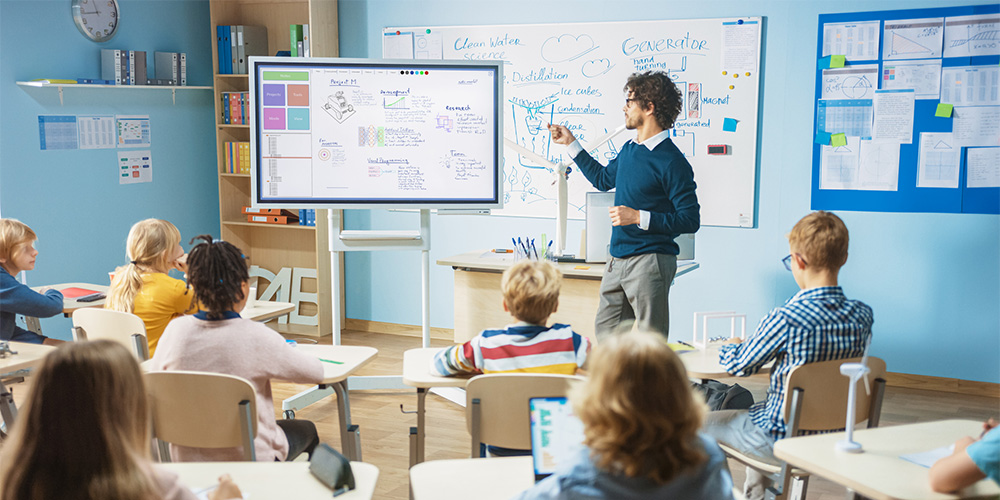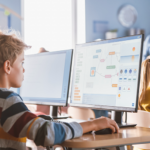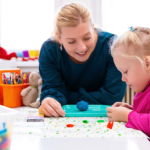Teaching the science of disasters goes beyond understanding how and why events occur. That’s part of it, for sure, but that learning outcome is just part of the story. In reality, learning about the causes, effects, and mitigation of natural and human-made calamities helps to soften anxieties and (ideally) prevent the loss of life.
No matter where you live, minor events and major catastrophes happen. Your students will see scary happenings on the news, if not in their own neighborhoods. If science means learning about the world around us, that means teaching about disasters remains part of the equation, even if it gets a bit tricky.
The following gives fast facts about the science behind hurricanes, floods, tornadoes, wildfires, and earthquakes, alongside strategies for navigating the emotional toil that happens after disaster strikes.
The Science of Hurricanes
Gaining their energy from warm ocean waters, hurricanes culminate in the form of torrential rain, flooding, rip currents, and winds strong enough to damage even the strongest, most fortified infrastructure. As outlined by the National Oceanic and Atmospheric Administration, the following conditions lead to the development of these disasters:
- Ocean waters warm beyond 80 degrees Fahrenheit.
- When temperatures rise and decrease with greater height, an unstable atmosphere forms.
- The air dampens near the atmosphere’s midpoint.
- The impacted area sits at least 200 miles away from the equator.
- Wind speeds and direction undergo no changes.
Science Experiment: Hurricane in a Jar
The Science of Floods
In definition, floods are simple and straightforward, happening after an abundance of water engulfs a normally dry area. These disasters occur when it rains a significant amount, when snow melts too quickly, when ocean waves stretch too far, or when infrastructure like dams and levees fail. Your students might find the following information from the National Severe Storms Laboratory particularly eye-opening:
- Floods kill more people than hurricanes, tornadoes, and lightning.
- Flash floods are the most dangerous variety and impact the most people, and areas with dense populations stand at the highest risk.
- Most fatalities happen when people drive into flooded roads.
- In mountainous areas, where runoffs happen in a swift tumult, a shallow creek (only 6 inches deep) can swell into a river in less than an hour.
Science Experiment: DIY Flooding
The Science of Tornadoes
In the U.S. alone, roughly 1,200 tornadoes occur each year. Their physical constitution amounts to a narrow funnel of air that spins with destructive force. Varieties include (a) the supercell tornado, the most common that forms in the wake of thunderstorm winds, and (b) quasi-linear convective systems, the less frequent variety that usually manifest for short intervals late at night and during the day’s earliest hours. Relevant facts include:
- Tornadoes do damage such as torn-off roofs, uprooted trees, and overturned vehicles as a result of 480 km per hour winds.
- The majority of tornadoes last fewer than 10 minutes, but that doesn’t discount the destruction they cause.
- Most of the world’s tornadoes occur in the United States, specifically in an area called “Tornado Alley,” which runs from Texas to North Dakota.
- Tornadoes are not so easily predicted. To that end, we only have records going back to 1950.
Science Experiment: Tornado in a Bottle
The Science of Wildfires
In a nutshell, these disasters are classified as uncontrolled fires that burn through forests, savannas, grasslands, and other ecosystems. Though wildfires know all geographic areas, they most frequently occur in rural areas. While these disasters can and do happen in light of human activity, it’s weather conditions that sustain the blaze. Students might find these wildfire facts from National Geographic of note:
- Many plants and animals actually benefit from wildfires, as the flames make room for new grasses, herbs, and shrubs that provide food and habitats.
- Fires burn more ferociously in uphill areas and become more controllable on lower ground.
- Though these occurrences are natural a lot of the time, they are also dangerous. Wildfires have killed 2,400 people over the past 30 years.
Video: How Wildfires (Actually) Help
The Science of Earthquakes
The ground beneath our feet stays in a state of perpetual motion, which is a wow-inducing fact in and of itself. As the Earth is not a single piece, it happens often that two blocks slip past one another, and when this event occurs, an earthquake happens.
The United States Geological Survey describes the crust and mantle as puzzle pieces, not a single sheet, and by virtue of their design, these sections move about and clash, which makes the ground shake. In short, it’s a matter of friction. To ensure enhanced understanding of this topic, Stanford University has compiled these fascinating tidbits:
- As many as 500,000 detectible earthquakes happen every year, but only about 100,000 of those are strong enough for people to feel. Only around 100 cause any damage.
- Despite most of them being harmless, earthquakes account for over half of fatalities brought about by natural disasters.
- In the past, earthquakes have been difficult to predict, but AI technology is quickly changing that.
Video: What Causes Earthquakes?
SEL and Disasters
Confusion serves as the predecessor of fear, but when details become clear, we can mitigate our anxieties. For young people especially, this truth escalates to a more severe level when talking about natural disasters. After all, even if you teach high schoolers, the world is still a new place, and with the excitement of life comes uncertainty and stress about the unknown.
Of course, when a disaster occurs, these tough feelings often reach a fever pitch. At this point, quality social–emotional learning and anxiety mitigation becomes an even more crucial element of your instruction.
As is custom for many educators who sought their position due to a desire to improve the world, the words of the saintly Fred Rogers spring to mind. When covering the topic of emotional health in light of natural and human-made disasters, he famously remarked, “When I was a boy and I would see scary things in the news, my mother would say to me, ‘Look for the helpers.’ You will always find people who are helping.”
Things aren’t always so simple, especially when a disaster proves particularly monstrous, but this sentiment provides a good starting point for helping young people who have seen a calamity either on television or in their own neighborhood. You can take an active role in helping your students cope, including:
- Being honest about how and why a disaster occurs
- Sharing statistics that reassure them of their safety
- Allowing them to ask tough questions
- Encouraging them to talk with one another






